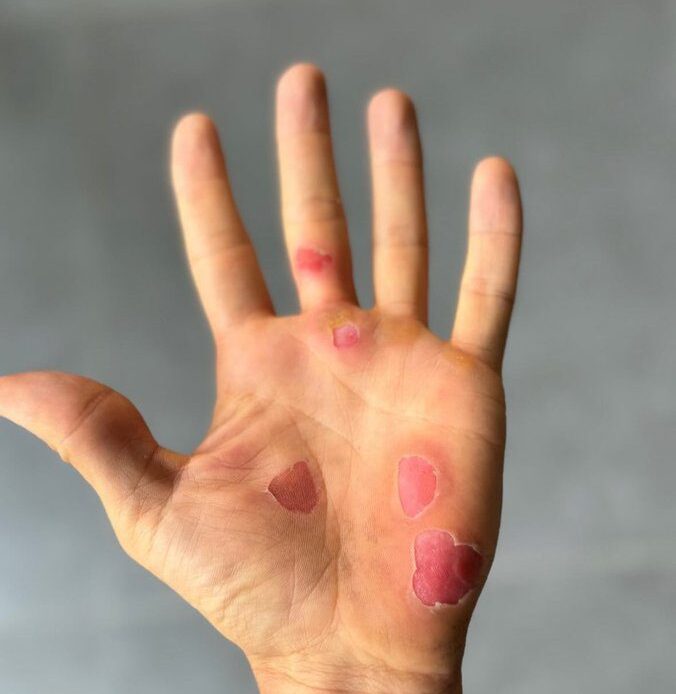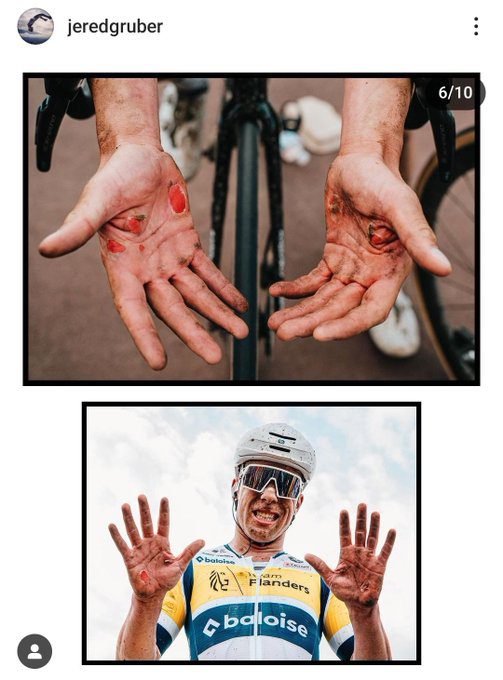Undoubtedly the toughest one-day of the year: Paris-Roubaix is a brutal race. 260 km with 55 km of cobbles in 29 sections, which can cause crashes and mechanicals and generally wreck your body.
Every rider will have stories after about their bad luck–or near-misses, and the look of pain on their faces when they finish proves just how hard the Monument is. But there’s something else which shows the sheer viciousness of the Classic: destroyed hands. Blistered and bloody, it’s a testament to what the cobbles do to the body.
One with the bike
When riding on the cobbles, your arms and hands are meant to be shock absorbers. You can’t grip too hard on the bars, rather, you want some give in your arms to allow you to “float” over the nasty rocks.
On Sunday, Mathieu van der Poel was godly. He continued his incredible spring campaign with an incredible win in France. This spring, van der Poel launched an attack at the 44 km mark to clinch victory at E3 Saxo Bank. He the repeated this feat at the 45 km mark, securing a hat trick of Tour of Flanders titles. During the 121st Paris-Roubaix, he executed the winning move on a three-star cobblestone sector nearly 60 km from the renowned velodrome. Only Andrei Tchmil’s legendary winning attack in the 1994 Hell of the North was slightly longer. With back-to-back Paris-Roubaix titles and six Monument victories, Van der Poel has created an incredibly legacy, and showed his dominance in the cycling world.
The cobbled roads began at the 97-km mark. Notorious sectors included the five-star Trouée d’Arenberg (with the notorious new chicane) at 2.3 km, Mons-en-Pévèle at 3 km, and Carrefour de l’Arbre at 2.1 km. As always, the race concluded at the iconic Roubaix velodrome, a smooth finish after some rocky roads.
“This goes way beyond my expectations, there will be a big party tonight. I was at the limit at Flanders, but here, I really enjoyed the final kilometers,” the world champion said. “I was just trying to make it hard for the others, that wasn’t meant to be the winning move or me going solo, but after that, I had the wind on my back.”
With a winning time of 5 hours, 25 minutes, and 58 seconds, it marked the fastest average speed recorded in the event’s history.
Photos of finisher’s hands showed just how tough it was.
Pidcock’s hands were a blistery mess.
Jules Hesters’s hands were like something out of a horror movie.
Norwegian Jonas Abrahamsen, who finished 27th, also had…
Click Here to Read the Full Original Article at Canadian Cycling Magazine…


